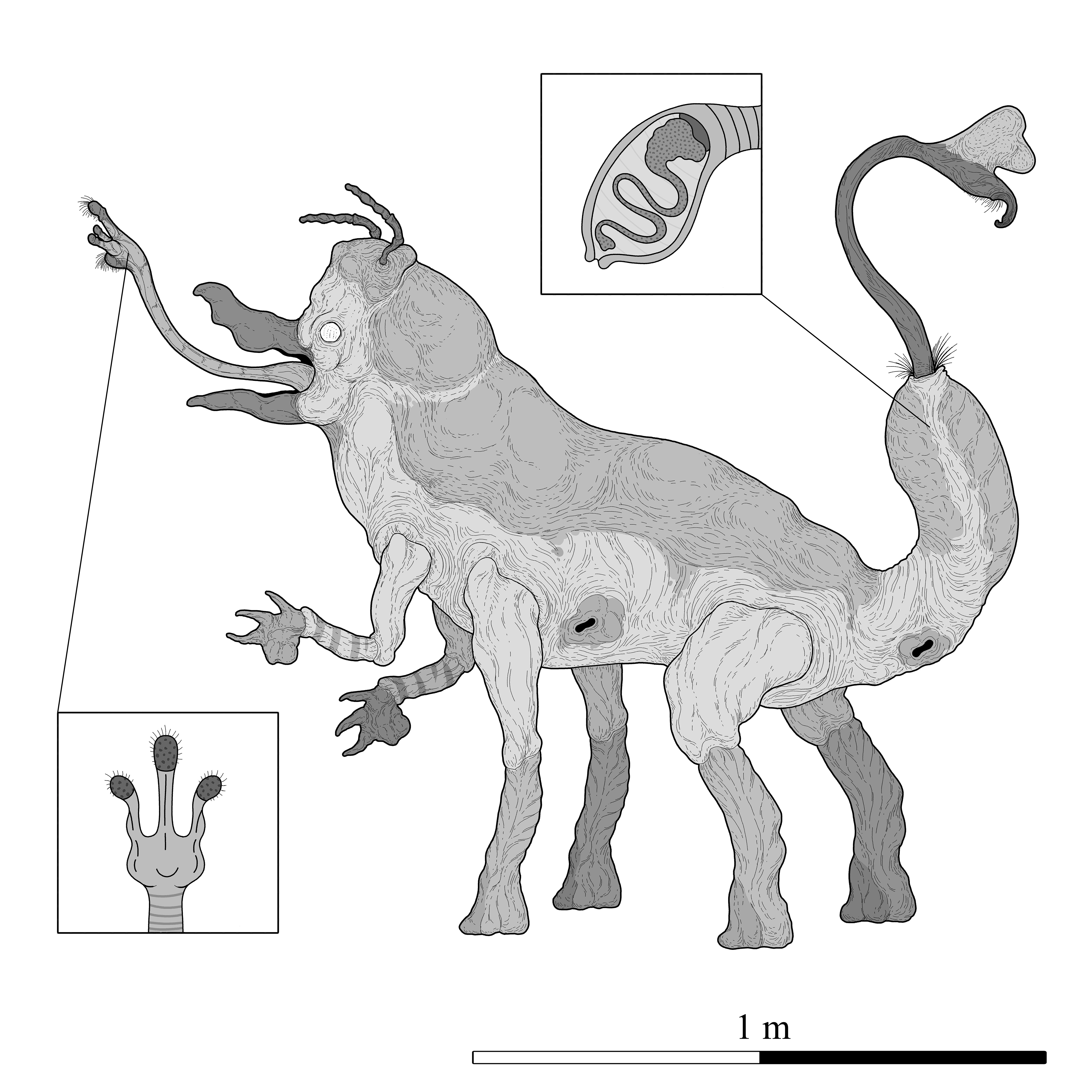HOME | DD
 kret-spec — The Ecdysozoic: Feeding and Reproduction
kret-spec — The Ecdysozoic: Feeding and Reproduction

#alternatehistory #alternativeuniverse #bug #bugmonster #speculativeevolution #speculativebiology #speculativezoology #speculativeinsect #ecdysozoic
Published: 2020-09-28 22:09:39 +0000 UTC; Views: 4976; Favourites: 114; Downloads: 0
Redirect to original
Description
The Ecdysozoic: an alternative timeline where vertebrates never managed to get much of a foothold on land. On this version of Earth, terrestrial niches are almost exclusively occupied by highly derived descendants of insects - specifically coleopterans - which have diverged into an astonishing variety of forms. They are the Lepidozoa, a clade whose geological longevity and mastery over the planet rivals the dinosaurs...
The general structure of Lepidozoan mouthparts is similar across all genera: a flexible "trunk" protected by a tough mandibular beak. The structures at the tip of the trunk - derivations of the ancestral labium and labial palps - are specialized feeding organs called dextra which vary widely between species. Herbivores often have finger-like manipulators for picking fruits or spade shaped apparatus for foraging in the earth. The dextra of predatory species is usually sharp, sometimes barbed, and used for picking apart carcasses. In some species the dextra becomes a weapon, ejected at high speeds towards prey chameleon-style. The dextral lobes are covered in thousands of sensitive chemoreceptors and can play a role in communal social behaviors like grooming and pheromonal communication.
Lepidozoan sex organs are housed in the pseudoabdomen, the hindmost part of the animal. Both males and females sport flamboyant organs known as vexillum. In males the vexillum serves a dual role of sexual display and sperm deposit. It is usually brightly colored, and often embellished with petals and lobes. In some species the ornamentation reaches a preposterous degree of complexity. The female vexillum tends to be diminished in size and color - although this is not universally the case. When not in use the vexillum is retraced into the pseudoabdomen for protection.
The individual illustrated here is a medium-sized herbivore, a male in the throes of a raucous social display. His trunk and vexillum are fully extended, tasting the air for pheromones with one end while simultaneously releasing a bouquet of his own with the other.
The two inset diagrams offer a closer look at the arrangement of dextra and the position of the retracted vexillum.
Related content
Comments: 3

These insects are very vertebrate-like.Do they have an internal structure similar to a skeleton?
👍: 0 ⏩: 0

👍: 1 ⏩: 1

👍: 1 ⏩: 0




















